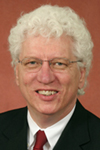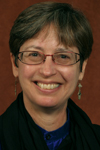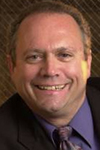
|
FACULTY NEWS |
||
|
RESEARCH Akash Gunjan, Ph.D., assistant professor of biomedical sciences, has solved a century-old mystery about proteins that play a vital role in the transfer of the human genetic code from one cell to another. The discovery could lead to finding new ways to help the body fight a variety of diseases, including cancer. For more than a hundred years, the best scientific evidence supported a belief that histones – responsible for packaging DNA inside the nucleus of cells – are highly stable proteins not rapidly degraded by the body. Yet researchers have not previously been able to explain why free histones, if they are not degraded as other proteins are, do not accumulate in large amounts within human cells. Gunjan has found evidence supporting his hypothesis that there actually are two pools of histones. The discovery sheds light on the way the body is able to regulate proteins for various complex tasks. Gunjan and co-authors Rakesh Kumar Singh, postdoctoral fellow, Marie-Helene Kabbaj, laboratory technician, and Johanna Paik, Ph.D., research assistant professor, published their findings in the journal Nature Cell Biology. Details in press release.
Tim Megraw, Ph.D., newly arrived associate professor of biomedical sciences, has been awarded a four-year, $1.2 million National Institutes of Health grant to explore the role of centrosomes in cell division and development and their connections to human disease. The focus of Megraw’s work is cell division. Cancer occurs when renegade cells start dividing uncontrollably. Anti-cancer drugs such as Taxol target the microtubule, a key molecule that regulates cell division. Along with other areas of focus, he’s looking into microtubule regulation and its relationship to the centrosomes, another component of the cell. This is a continuation of work Megraw and his wife, Ling-Rong Kao, now an assistant in research at the medical school, began in 2003 at the University of Texas Southwestern Medical Center in Dallas. Listen to the FSU Headlines radio story.
Charles Maitland, M.D., neurology professor, reports the following new clinical research:
FRUIT
(FSU-Research Under Investigation Team) is a group of FSU researchers that meet
to stimulate and support research that functions to improve collaboration in
the College of Medicine and FSU. The purpose is to increase research and
publication and provide a forum for discussion and collaboration. The group
is working with
Mike Smith,
professor, Office for Research and Graduate Programs, and
John Van Wingen,
Ph.D., assistant dean and director of information management, on upgrading
the Web site to improve research collaboration and communication. If you are
interested, contact
Eron G Manusov,
M.D., associate professor of family medicine and rural health.
PUBLICATIONS Jihun Lee, Ph.D., a postdoctoral fellow in the laboratory of Michael Blaber in the Department of Biomedical Sciences, has just had two papers published back to back in the Journal of Molecular Biology, one of the top journals in the field of structural biology. The first paper, titled "The Interaction Between Thermodynamic Stability and Buried Free Cysteines in Regulating the Functional Half-life of Fibroblast Growth Factor-1," describes the successful development of a protein engineering design principle by which the functional half-life of "second generation" protein biopharmaceuticals can be controlled. The second paper, "Structural Basis of Conserved Cysteine in the Fibroblast Growth Factor Family: Evidence for a Vestigial Half-cystine," provides evidence for an evolutionary pathway of the human fibroblast growth factor family that identifies an ancient disulfide bond as a key structural element in the protein architecture.
Manusov
has written
the book “The
Rural Health Care Dilemma: A
Physician’s
View.”
About 20 percent of Americans live in rural areas, yet only 10 percent of
physicians choose to practice there. Manusov cites isolation from
colleagues, lack of technology and skewed expectations of how a physician
practices in a rural community as the reasons why doctors stay away from a
rural setting. He spotlights both physician and patient needs in terms of
infrastructure, mainstream technologies and medical expertise. And he lays
out what it would take to improve the education, recruitment and retention
of rural physicians who will discover the joys of practicing medicine in
isolated communities. Jose E. Rodríguez, M.D., associate professor of family medicine and rural health, had two recent publications:
In addition, he
is one of the editors for the
Family Physician Inquiries Network
(FPIN).
The Department of Family Medicine and Rural Health is a member of this
n Charles Ouimet, Ph.D., professor of biomedical sciences, and co-authors Michael Darcy, graduate student, Kate Calvin, postdoc, and Katie Cavnar, Ouimet’s former lab manager, just had a paper accepted at the Journal of Comparative Neurology: “Regional and Subcellular Distribution of HDAC4 in Mouse Brain.”
James Olcese, Ph.D., associate professor of biomedical sciences, reports these two recent publications: · 1. “Induction of mPer1 Expression by GnRH in Pituitary Gonadotrope Cells Involves EGR-1,” Molecular and Cellular Endocrinology 311, with two co-authors. · 2. “Protection Against Cognitive Deficits and Markers of Neurodegeneration by Long-term Oral Administration of Melatonin in a Transgenic Model of Alzheimer Disease,” Journal of Pineal Research 47, with 10 co-authors.
Karen Geletko, MPH, assistant in medicine, published “Reducing the Impact of the Health Care Access Crisis Through Volunteerism: A Means, Not an End” in the July issue of the American Journal of Public Health. Co-authors were Beitsch; his predecessor as associate dean for health affairs, Robert Brooks; and Mark Lundberg from the Florida Department of Health. The article highlights Florida’s Volunteer Health Services Program and encourages other states to establish similar programs. VHSP was created in 1992 to strengthen the existing safety net. Since then, more than $1 billion of services have been provided to uninsured and underserved populations. Currently, more than 20,000 volunteers participate statewide. Key incentives for provider participation have been an organized framework for volunteering and liability protection through state-sponsored sovereign immunity.
John Agens, M.D., associate professor of geriatrics, had an article in the summer issue of Florida Medical Magazine titled “The Aging Baby Boomers and the Future of Physician Practices.”
Asim Jani, M.D., former clinical associate professor in Orlando, is departing for a major epidemiology position at the Centers for Disease Control, but not without leaving a legacy. “He has authored a four-part series on H1N1 for ConsultantLive, and he prominently listed his credentials with us on those," said Michael Muszynski, M.D., dean of the Orlando regional campus. "He was consistently a major supporter of the FSU College of Medicine and especially of our mission, and he mentored our students in the public health electives and Infectious Diseases courses. This online publication enjoys broad distribution among primary care physicians, so we will receive very nice exposure thanks to his thoughtfulness.”
PRESENTATIONS Askar Chukmaitov, M.D., Ph.D., MPA, assistant professor of family medicine and rural health, recently presented the poster “Patients Without a Medical Home: A Study of Overuse of Emergency Departments in Florida” at the Academy Health Annual Research Meeting in Chicago. Chukmaitov created the poster with Robert Brooks and others.
Dennis Tsilimingras, M.D., MPH, assistant professor and director of the Center on Patient Safety, presented a two-hour CME for the Capital Medical Society and Florida Medical Association titled “The Occurrence of Adverse Events and Medical Errors.” He updated physicians on common patient safety definitions, the theory for the occurrence of adverse events/medical errors in the health care system, major inpatient studies and reports, major post-discharge studies on adverse events/medical errors and common types of adverse events. He also supplied recommendations that may prevent adverse events/medical errors in the health care system.
Aubrey
presented a three-hour workshop for the Florida Chapter of the
National Association of Social Workers statewide conference in Orlando June
3-6. Her presentation was titled “Motivational Interviewing: Improve Client
Readiness and Commitment for Health Behavior Change.” Maitland presented a paper titled “Paroxysmal Upgaze Palsy in Childhood – A Longitudinal Study and Literature Review” to the North American Neuro-Ophthalmology Society (NANOS) in Lake Tahoe, Calif. The paper was co-authored by Brad Stephan, Class of 2011.
PARTICIPATION
The
AHEC
program has participated in two health fairs sponsored by Neighborhood
Health Services: a men’s health fair June 19 and a larger event July 25.
The goal is for an AHEC tobacco-cessation consultant to be available.
Providers will know when the consultant is available and may refer patients.
Patients who cannot come to NHS when face-to-face consultations are
available may be counseled over the telephone, if available. If the numbers
of referrals would support a quit-smoking class, one will be held at the NHS
site. Three members of the Department of Family Health and Rural Medicine are serving on the board at Neighborhood Health Services: Curtis C. Stine, M.D., associate chair and professor of family medicine and rural health, Aubrey and Rodríguez. Rodríguez is the new medical director at NHS and has been working diligently to improve the electronic medical records and to increase access and referral opportunities. Medical students have the opportunity to work with College of Medicine physicians there. The opportunity gives students an insight into the need for care of the underserved, offers an opportunity for service and improves access to care and training of primary care physicians interested in serving at-risk and high-need populations.
Rodríguez and two College of Medicine students, Amanda Pearcy and Jordan Rogers, both Class of 2012, have been instrumental in creating the Humanism Evolving through Arts and Literature project, or HEAL. The initial book has been funded by an Arnold P. Gold Foundation Grant, and the first compilation of stories, artwork, sculpture, photographs and other creative expressions will be released this fall. Rodríguez presented the project at the Annual University of North Carolina Faculty Development Symposium and has been very active in the stimulation of creative expressions for medical students. As part of the project, a Web site has been created where current works can be viewed. Username: Rodríguez. Password: Humanism.
AND IN OTHER NEWS
"You're more likely to get the virus from contact from shaking someone's hand or hugging them than handing them a Snickers bar," said Dr. Michael Muszynski, a pediatric infectious disease specialist and dean of the Florida State University Regional Medical School in Orlando. According to Muszynski, a flu virus prefers a cold, hard environment to survive if it's not in a person's warm, wet nasal passages. So, one reason why Halloween may pose less of a threat than, say, a schmoozing Christmas party is the plastic around the candy and the rubber masks. "The flu virus likes hard surfaces to live on and can probably survive no longer than two to eight hours on really hard and cold surfaces," said Muszynski, who added that a lingering virus is much more of a problem on door handles than on something porous like a tissue, or a rubber mask. "It's unlikely that someone who's getting influenza all over a mask [in a store] is leaving it on long enough to infect people," Muszynski said. "I would be really shocked if a flu virus lasts longer than a few hours on a candy wrapper." … In addition, Muszynski thought the best prevention for the flu is always the vaccine. "If you want to protect your child, then get your child immunized, there's no doubt about it," he said.
Joan Meek, M.D., FAAP, pediatrics clerkship director for the Orlando regional campus, received a Special Achievement Award from the American Academy of Pediatrics for distinguished service and dedication to the mission and goals of the academy for her role in developing the Florida Breastfeeding Coalition in an effort to increase breastfeeding rates in Florida.
Meek also was the program director for October’s 26th Annual Care of the Sick Child Conference in Orlando. One impressive thing about the national conference was the strong College of Medicine presence. Five of the nine members of the Planning Committee represented Florida State University: Muszynski; Nicole Bramwell, M.D., MBA; Janice Howell, M.D., FRCPC, FAAP; Douglas Short, M.D.; and Penny Tokarski, M.D. And fully half of the faculty had FSU ties. Besides Meek, Muszynski and Short, the faculty included Don Eslin, M.D.; Michael Howell, M.D., MBA, FACP; Carlos Sabogal, M.D.; Mark Weatherly, M.D.; and Joshua Yang, M.D.
Susanne Cappendijk
, Ph.D., assistant professor of biomedical sciences, was featured on the Mag
Lab Web site. A
news story
there examined her continuing research into the effects of nicotine and
explored her use of zebra finches in her work.
Maitland was the featured speaker for “Balance Dysfunction in Multiple Sclerosis,” National Multiple Sclerosis Society Blue Print Series, in June in Pensacola.
REMEMBERING RANDY RILL The College of Medicine paused in sadness this summer when Randy Rill, a founding faculty member of the Department of Biomedical Sciences, died after a two-year fight with cancer. A memorial service in September captured the life of this man described in the program as “the consummate scholar, completely and passionately dedicated to the needs of students.” For those who were not able to attend, and those who want to reread the words they heard that evening, here are excerpts from two reminiscences.
Adviser, family man, friend By Mohammad Al-Sayah I am one of the last graduate students that Dr. Rill supervised in the Department of Chemistry and Biochemistry. It is my honor to be here today to say a few words about a man who impacted my life on a professional as well as a personal level. I joined FSU back in August of 2000. At that time Dr. Schlenoff mentioned to me that if I was interested in doing separations research I had to join Dr Rill's group. I was in the analytical chem division, and Dr. Rill was in the biochem division. I was intimidated at first. How could I work for a biochem professor when I hadn't taken any biochem classes in my undergraduate studies? And this is how I met Dr. Rill. I walked into his office and he started talking to me about his research. He felt that I was worried. He was very kind and sincere. He made it seem so normal for an analytical student to work with biomolecules. "It is so easy," he said. "All you have to do is take one or two biochem classes and you will be all set." I trusted him and decided to join his group.
Dr. Rill supported me throughout my career at FSU. He showed full support while I was taking qualifying exams, writing research proposals, getting ready to go to conferences and present our research. He even looked for opportunities without my even asking. I remember one time he came into the lab and asked me for a copy of my "permanent resident card." He said he wanted me to apply for a scholarship for which only U.S. citizens and permanent residents were eligible. I wasn't a resident at the time, and I still remember how disappointed he got that I couldn't even apply. I think he was more upset than I was. Halfway through my graduate studies, Dr Rill accepted the position as a founding member of the Department of Biomedical Sciences. He was very busy at the time but always found time for us and gave us the proper attention and support. I will never forget how supportive and encouraging he was when I was going up to Merck for a job interview. My lab mate, Kirsten Jeffries, had told him that I was very nervous. He came by one afternoon and started telling me how much he believed in me and how I should just be myself and everything would go fine. I felt more confident afterward. I can't describe how happy he got when I told him I got the job. He was so proud that he told everyone at a graduation ceremony dinner that “Mohammad got a job at Merck!” At that moment, that pride and the look on his face made me feel he was more like a father than a professor. This was Dr. Rill the professional advisor. Now I want to spend a couple of minutes talking about Dr. Rill the person. When I joined Dr. Rill’s research group, I had just moved from Lebanon. It was a big change for me. He tried to help me out through the culture shock I was experiencing. He told me that cultures can be very different but it is up to the person to adjust to them quickly. I am very thankful for his help in getting adjusted to living in the U.S. We had conversations about our families. Dr. Rill is a great example of a "family man." His family always came first. I had never seen him so excited as when he talked about his kids or grandkids. He was so happy when he told me how they were planning a family vacation. He was so excited when he told me they were expecting a grandchild. He really loved his family. Dr. Rill was always there for me whenever I needed advice, about anything! I am very grateful for that. I feel lucky that moving to the U.S. introduced me not only to a great professor but to a great friend.
Being there By Aloknath Pandya, Class of 2012 ... What stands out in particular was one thing: Dr. Rill’s presence. His presence in a very literal, physical, tangible sense. He was there. Considering the circumstances, that was an accomplishment in itself. Dr. Rill was an intelligent man, so he knew what was happening with his body and the treatment that was necessary. He knew what would be required and the toll it would take. Yet in spite of all that, he was there, as he had been many times before, teaching class. He could have easily taken the semester off and there would have been no quarrel about it, not from students, faculty, anyone. Dr. Rill chose not to do that. Many times in life you feel obliged to do something, usually because of external forces. In that sense the word “obligation” takes on a negative connotation. You have a deadline to meet, so you are obliged to have the paper submitted, obliged to dress a certain way, talk a certain way, etc. You are obliged to do it because if you didn’t there would be negative repercussions. I feel that Dr. Rill was obliged to teach our class that semester, not for any legal or administrative reason but, possibly, a moral one. He compelled himself. He was obliged to himself to teach our class, to help us prepare for our careers, to help us understand what he spent his life doing. He did so until he could not anymore. If we all could put forth that kind of effort and have that level of fortitude and purpose, I think we would do greater justice to those around us. Then it would leave no question about who we are, where our loyalties lie, what our true intentions are. We are in the service of others, and that is something we can do resolutely and in the face of great adversity.
UPDATING YOUR PRACTITIONER PROFILE Here’s an excerpt from Crystal A. Sanford, CPM program operations administrator, Florida Board of Medicine, that faculty members might find helpful: When a physician becomes licensed in Florida, he/she will be given a practitioner profile to review for accuracy. The profile goes live on our Web site 30 days later. Thereafter, practitioners are required to update their profile within 15 days of any change. The Board of Medicine has supported legislative changes that would increase that reporting time period to 30 days; however, at this time, it remains 15 days…. So right now, you might be asking yourself, when was the last time you updated your profile? Take a moment, access the Internet and go to https://ww2.doh.state.fl.us/mqaservices/login.asp. Once there, click on Licensees. This takes you to the screen where you can update your profile. You can view your profile from the same location. The Department of Health has a publication, A Guide to the Florida Practitioner Profile, that provides a great deal of information regarding the profile. You can access this guide at www.doh.state.fl.us/mqa/profiling. In addition, Profiling Staff is available to assist you and can be reached at (850) 488-0595, extension 3.
|
||
 |
 |
 |
| E-mail Alumni Affairs Phone: 850-645-9428 | ||
|
|
|
Florida State University
|
College of Medicine
|
Copyright 2013
|

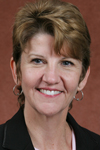
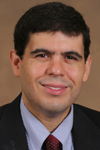 ational network that provides evidence-based answers to common clinical
questions. They are divided into three categories: the Clinical Inquiry,
Help Desk Answer and EMedRef reviews. These reviews are published in
American Family Physician, the Journal of Family Practice, Evidence Based
Practice (a CME newsletter) and EMedRef (PEPID), a PDA resource that College
of Medicine
faculty and students have. To date, five faculty members have contributed
manuscripts, and there are 14 Help Desk Answers that have been accepted for
publication or published, one PEPID review, one Clinical Inquiry, as well as
five projects that are in the review stage at this time. Thirteen students
have been first authors on these reviews.
ational network that provides evidence-based answers to common clinical
questions. They are divided into three categories: the Clinical Inquiry,
Help Desk Answer and EMedRef reviews. These reviews are published in
American Family Physician, the Journal of Family Practice, Evidence Based
Practice (a CME newsletter) and EMedRef (PEPID), a PDA resource that College
of Medicine
faculty and students have. To date, five faculty members have contributed
manuscripts, and there are 14 Help Desk Answers that have been accepted for
publication or published, one PEPID review, one Clinical Inquiry, as well as
five projects that are in the review stage at this time. Thirteen students
have been first authors on these reviews. 